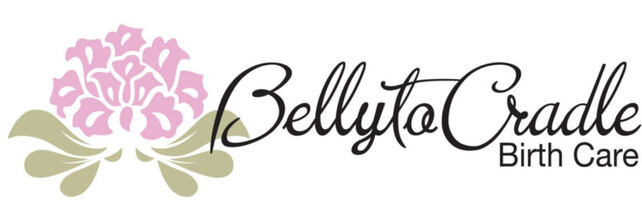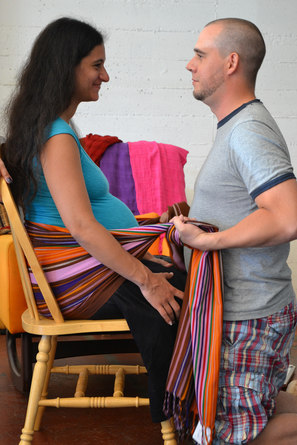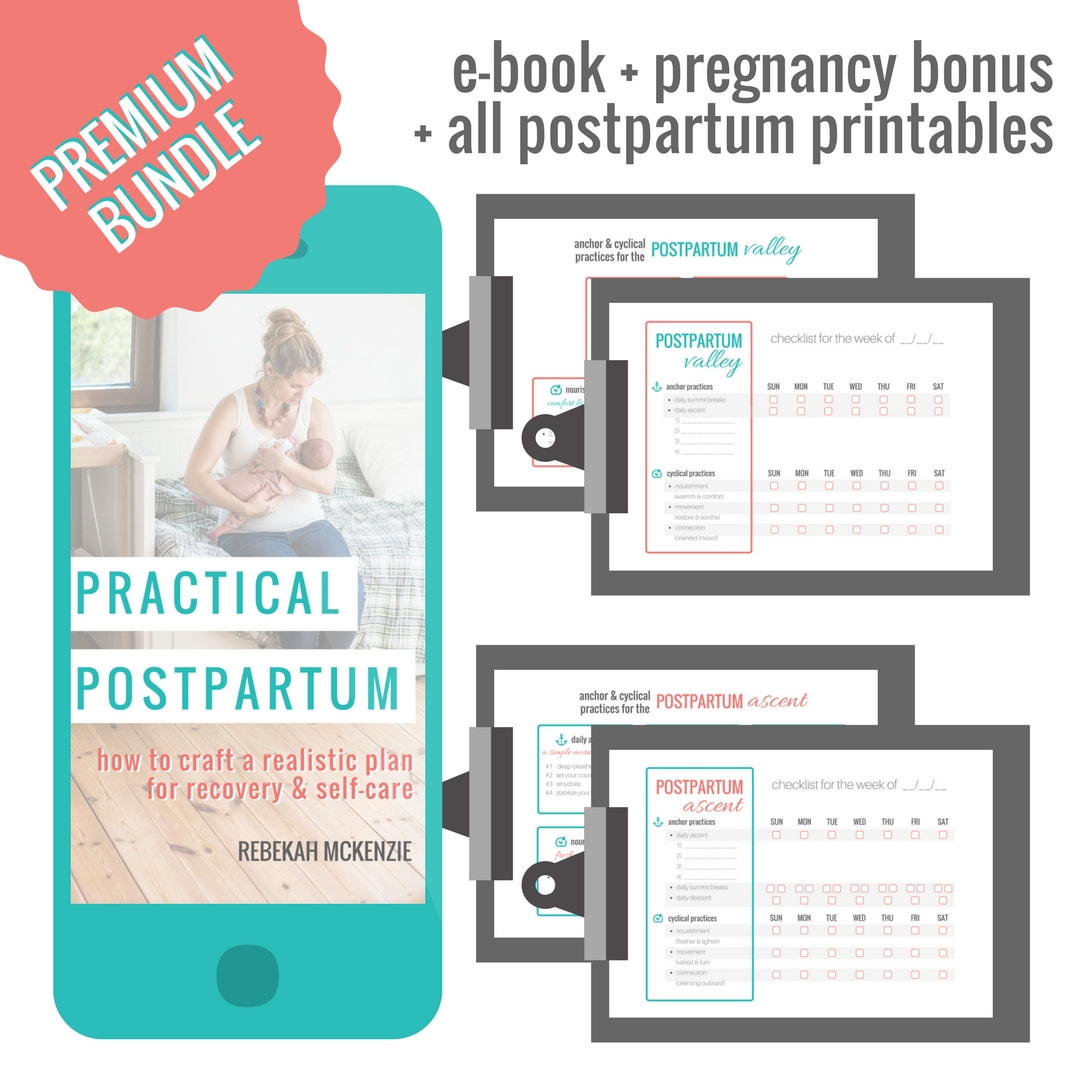|
While wildly popular for families seeking solutions to infertility in other places, surrogacy has not yet taken hold as a regular method of family growth in the Florida panhandle. In fact, this year, BEST certified doula, Lindsey Roderick was the first Belly to Cradle doula to ever be hired by a surrogate! "I was excited that someone saw the value in doulas even though their birth story wouldn’t be the 'norm' from the start," Lindsey says about her first interactions with Amber C., who was a surrogate for a couple who live overseas. A quick breakdown about surrogacy for those who may not know: surrogacy can have many variations, but generally there are two types of surrogacy, gestational and traditional. Traditional surrogacy is a more controversial and less popular approach in which a woman not only donates her own egg, but also carries the baby for a family. In gestational surrogacy, a gestational carrier is matched with a family (termed "intended parents" or "IPs") after intensive screening. This family may already have frozen embryos that are the result of combination their own egg and sperm, a donated egg and sperm, or their own sperm and a donated egg. One or two of these frozen embryos will be implanted in the gestational carrier's uterus after hormone therapy. Or, they may choose to create fresh embryos, the fertilization of which will be timed with the gestational carrier's hormone therapy so that they can be transferred into the surrogate's uterus immediately. Surrogacy is an incredibly invasive and lengthy process that can take years from the time a carrier is matched with IPs to the birth of the baby. This is an incredibly invasive and lengthy process involving testing, daily hormone injections, doctor's appointments, repeated embryo transfers, and travel that can take years from the time a carrier is matched with IPs to the birth of the baby. The emotional and physical toll that the process takes on not only the IPs but also the surrogate can be enormous. And in Amber's case, the distance, cultural differences, and the lack of knowledge her IPs had about pregnancy and birth compounded her need for support. "Surrogacy is definitely not for the faint of heart!" Amber says. "I chose a doula because I did a lot of research when deciding on surrogacy. There are a lot of medical things involved with surrogacy, so having someone that was not a doctor to be there for me who had a vast knowledge of pregnancy was very important." And, it was important that the doula care she received was customized to fit the special circumstances surrounding the birth process. Lindsey says that getting everybody on the same page was the first step, something that can be made more challenging by the contractual agreements that are necessary in a surrogate arrangement. "We had to make sure the entire team was cohesive--from her husband, to the IPs, to the provider and hospital staff. This required some additional communication." Communication was especially important between Amber and her husband since they were not the baby's parents. Amber says that her husband's focus was on making sure she stayed comfortable even though she was seeking a more natural approach. "He [had] a different emotional investment with this birth," she says. "This baby’s heath was important, but so was hers, and her ability to still safely keep her autonomy and advocate even while carrying someone else’s child." For all of us at Belly to Cradle, one of the most important aspects of doula care is insuring that the birthing woman always feels like her doula is the one person whose sole job is to care for HER. This became especially important for Lindsey during Amber's pregnancy and birth experience. "I never wanted her to feel like just a vessel. This baby’s heath was important, but so was hers, and her ability to still safely keep her autonomy and advocate even while carrying someone else’s child."
This support became even more vital when Amber faced multiple health scares that included the possibility of an early delivery--that the IPs might not be able to get to the United States in time for. Having a doula provided her with an additional level of support she needed during these times. "The carrier can't make sole decisions," Lindsey says. "Other opinions have to be taken into account which adds another level of complexity and working through risks and benefits." In the end, circumstances aligned perfectly; labor was held off until the perfect time, the IPs arrived with time for everyone to settle in for the birth, the hospital staff was lovely and caring in the midst of unconventional circumstances, and Amber had the experience she was hoping for. "I loved the support I received from Lindsey my entire journey and I truly believe it would not have been as great if it hadn't been for her!" Doula care for the win.
1 Comment
 Christina, Professional Doula Christina, Professional Doula I had a client contact me saying, “I’ve been doing some research and I think I’d like to have a rebozo incorporated into my birth.” Thus, the search for a rebozo credential ensued. I found a great course created by birth superstar, Gena Kirby, and promptly joined. During the course, I learned so much more than just the basics of “rebozo”. Gena shared where the rebozo originated, all the ways it has been used over the years, and lastly how to use it to comfort a laboring mother. But what is a rebozo? Let's start with a little history lesson... A rebozo is a long piece of fabric, usually about 6 feet long or more. Women in Mexico have been wearing them for centuries. Originally thrust upon them by the Spaniards, they were required for religious reasons to cover their heads with a piece of fabric. The women eventually took it and made it their own. That’s how the “rebozo” came to be known. Each family had different patterns they passed down from generation to generation. Years ago, you could tell if a woman was married by how she would wear her rebozo. A rebozo is given in wedding ceremonies, women are buried in their favorite rebozo, still today in the event of stillbirth, rebozos are treated with herbs and essential oils and the baby is buried in it. The rebozo is more than just a piece of fabric; its sacred to the people in Mexico. But why (and how) would you use a rebozo during labor? During labor a rebozo can be used for SO many things:
Used in a labor setting the rebozo helps to bring the couple closer, and the techniques I share during a Rebozo Integration Session will ensure that even the most under-confident partner, can be hands on and supportive throughout labor and delivery. The rebozo helps make mom feel safe, calm, and comfortable. Mom needs her entire birth team to be confident and grounded, and taking my rebozo instructional session will help achieve that goal. This means that you can use a rebozo with or without the services of a doula! Rebozo isn’t just for labor! Rebozo if used properly can help relieve back strain and even that pesky belly pain late in pregnancy. When you take my private session, you will choose which rebozo you want, after labor and delivery you can use your rebozo for baby wearing. I will share with you how that can be achieved during our session as well. And maybe the very best part of our new Rebozo Integration service is that you receive a traditional rebozo of your very own to keep as a tool for your birth, your postpartum, future births, and as a treasured keepsake!
Are you curious about how a rebozo could play an invaluable role in your birth? Contact me today to schedule your session! If you live in the southeast United States, it's safe to say that you've heard about the imminent threat from a wandering monster of a hurricane named Irma. There's a meme floating around Facebook that says something along the lines of "you know you're a Floridian if you find out a hurricane is now a category 3 or higher and now you have to care." While winging it *might* be a (sometimes misguided) option for some folks, parents of small children and pregnant women should be especially prepared for whatever emergency situations they might face--especially with the hurricanes, earthquakes, flooding, and wildfires happening around the United States right now.
Evacuation Usually evacuation wouldn't be the first thing on the list of things to consider, but this may be on the top of the list for pregnant moms who are especially vulnerable in situations where access to emergency services, basic utilities, or safe travel cannot be guaranteed. For instance, a strong hurricane can produce extremely low barometric pressure, which in turn can produce labor (even prematurely). Being caught in a situation where the baby might be born without access to emergency services, the hospital, or even electricity is certainly not the safest option--especially if there are birth complications. So what is a mom to do if she needs to evacuate for emergency reasons, especially if her due date is looming?
If You Stay... For some, staying put may be the only option. If you do, consider the following, with the understanding that emergency services and utilities may still be spotty or nonexistent for hours, days, or even weeks after a disaster. Most local government agencies recommend preparing just like you will be on a camping trip in a remote area for at least 72 hours, if not longer.
And always remember--don't be scared, just be prepared!!  Lydia DeCastra Lydia DeCastra As early as I can remember, my grandmother always said, “it takes a village to raise a child.” Although she usually repeated this proverb to comment on the Jones baby’s outbursts at church on Sunday or to justify disciplining children at the local supermarket, this proverb took on a whole new meaning when I joined the Belly to Cradle team. Today I feel compelled to share some facts that make The Belly to Cradle Team unique in the world of birth care. #1: Diversity of Caregivers Talk about a village! At Belly to Cradle, you can personally choose the caregiver that best meets your desires and needs as a client. With four professional doulas and two board certified lactation consultants all with different backgrounds, personalities, life experiences, certifications, service fees, and all living in different geographic areas within the Greater Pensacola, FL, to Mobile, AL, you the client are more likely to find a caregiver that perfectly suits you and your family’s needs. #2: Continuity of Care When you hire Belly to Cradle, you’re not just hiring your individual birth doula or lactation consultant, you’re actually hiring a whole network--a whole force of knowledgeable, caring, professional women! Because we are a group of women in business together, we as a group are accountable to not only all of our clients but to each other. If due to some disaster or unforeseen circumstance your individual doula or consultant cannot make your appointment or birth, another Belly to Cradle caregiver will be on the way and will be able to seamlessly fill-in at no additional cost. Talk about great insurance! Even more wonderful, is your ability as a mother and a parent to enjoy continuity of care with a business that you trust. Maybe you begin your Belly to Cradle journey by hiring a doula for your first birth and afterwards hire one of our lactation consultants to help your baby establish a better latch. Or maybe you needed some breastfeeding help from a lactation consultant and through your positive experience with Belly to Cradle decide you want to hire a doula for your second birth--however you choose to utilize our care, we are a "one-stop-shop" of caring, collaborative birth professionals. #3: In-Home Care! Going back to the grandma chronicles again; I always remember that dear old woman muttering under her breath about having to get all ‘dolled up’ to go see her various caregivers for appointments. “I remember in the good old days when people used to come to you,” she’d declare. At Belly to Cradle, just like grandma says, ‘we come to you!’ Don’t worry about the 3 day old breast milk sitting on the kitchen counter, laundry in piles on the couch, your toddler’s half consumed juice pouch stuck between the crevices of your couch. We’ve all been there…done that. Don’t stress! You just stay in your yoga pants and an old t-shirt and let us take care of the rest. #4: Invaluable Connections and Local Resources Belly to Cradle has been serving the greater Pensacola, FL area since 2011 and we have worked very hard to build and maintain a strong, professional reputation within the medical and birth communities in the local area. As our client, you will have access to countless resources during and after your pregnancy to chiropractors, photographers, midwives, massage therapists, many of which Belly to Cradle has a close, established working relationship with. In addition, depending on the additional service that you need, you may qualify for a discount of 10-20% off services with some of Belly to Cradle’s preferred business partners listed on our website. #5: Alternative Payment Options We understand that having a baby is expensive--and the thought of spending more than you absolutely need to for the cost of your care can be overwhelming. So, we offer various different payment methods and rates. Aside from offering a military discount to clients, our Gift Registry allows loved ones and friends to give you the invaluable gift of pregnancy, labor, and postpartum support by gifting contributions toward your balance with us. We also are willing to put your doula care payments on ‘layaway’ if you are not able to pay in full for services. We will work with your unique financial situation and will keep an account of payments made via our convenient and easy Payment Portal. While we can't currently take insurance payments, we ARE approved to accept HSA and FSA cards as payment for any service that we provide. Now that’s something to get excited about! #6: The Belly to Cradle Family
At Belly to Cradle our relationship with you and your family does not end after your final prenatal appointment with your doula or your last house visit from your lactation consultant. We stay in touch and will get you in touch with other local Belly to Cradle moms and families through Facebook groups, local events, and Belly to Cradle hosted mommy- baby get-togethers. You will be part of our Belly to Cradle Family. Birth is transformative. Ordinary women blossom into mothers, ordinary men become fathers…and the family takes root. Whether this is your first birth or your tenth, the process is messy, chaotic, unpredictable, but yet so incredibly beautiful. And we, the women of Belly to Cradle, LLC can’t wait to squat, push, and latch with you on the road to a happy, healthy birth and family experience! Let's say you recently had a baby and started breastfeeding because it's something you have always wanted to accomplish, or maybe it's something you just wanted to try out and fell in love with the bonding experience it creates with you and baby. But maybe you've started to face challenges, or are just unsure whether everything is on the right track--well, that's where we come in! But why does a 1.5-2 hour visit cost so much? Right now, an initial home visit with Belly to Cradle costs $125 (for around 90 minutes) and a repeat home visit (around 60 minutes) costs $75. In the office, you’ll pay $100 for that 1.5-2 hour initial visit, or $50 for a follow-up. Or, if you have an older baby, have already seen an IBCLC, or just need a weight check, we have some appointment times specifically designed for these scenarios, too. For a full list, check out our website here. Initially this may seem like a lot to spend, especially with all the other baby-related costs you have to be concerned about, and we understand that! It’s tough to ask a family who may be struggling with breastfeeding to pay to get help -- we wish we could do this work for free! And who REALLY wants to discuss money?? It's safe to say that most, if not all, lactation consultants are in this business, not for the money, but simply to help moms and families have the best postpartum they possibly can, while helping babies eat! But, the time we spend with you at your consult is actually the tip of the iceberg. But why is the initial visit the most expensive? Typically, we will spend on average 4 to 5 hours on each of those initial visits. We start by talking with you to figure out scheduling and what's going on with mom and baby, or by reviewing your submitted intake form and researching your concerns so we’re exceptionally prepared when you walk through our door (or we walk through yours!). Our goal is to make the most of our time together, so we try to get the formalities out of the way before we even meet you. A home visit is a wonderful asset to your postpartum--not having to pack up the baby gear and the baby while wondering how you'll survive yet another appointment, being able to have a lactation professional help you breastfeed in your favorite chair--hey, you don't even have to get dressed or look "presentable"! We LOVE providing this service because of how many needs it meet in the days immediately following birth. The cost is higher in this setting though, because of the time spent driving to and from your home. After the initial appointment, we generally spend about an hour charting (we are required to keep charts since IBCLCs are classified as medical professionals) because we like to spend the full appointment focused on the family and that beautiful baby, not staring at a screen. And, after any appointment with us, you now have 2 weeks of unlimited text, email or phone calls to ask any questions, get support or address any concerns you may have. That means you sometimes receive an additional hour or more of our time and attention -- and we wouldn’t have it any other way. We know you may not be able to remember everything we talked about in person, and you may have more questions or an ongoing difficulty we can continue to help with. This is yet another part of our care that we love to provide! We are not of the opinion that breastfeeding is "best" for every family--some families benefit so much from reassessing their infant feeding goals and choosing alternative feeding methods (such as pumped breastmilk in bottles or formula). BUT breastfeeding is very important to many families, and since it is the biological norm, many more families are choosing breastfeeding after learning more about it and gaining support as they start out. And, some families are choosing feeding with breastmilk after assessing not only the health benefits but also the cost comparison with formula.
Breastfeeding is free! Yes, you can buy nursing bras, nursing clothes, boppys, breast pumps, etc. But none of that is NEEDED to breastfeed. However, to formula feed it's on average $1,733.75 for the first year to buy just the formula; that's enough money to take your family to Disney! When broken down, formula can be as cheap as 9 cents per ounce up to 31 cents an ounce (depending on what brand and type you choose). That cost does not include bottles or the potential increased costs of healthcare for those babies who don’t receive breastmilk. (And all of this doesn't even include the time spent preparing & cleaning bottles, or the money/time spent on obtaining sterile water for safe formula prep.) We want your breastfeeding care to be affordable, of course. So here are some ways to keep it that way:
We are here for you no matter what you choose--from how you feed to your baby, to who you see for your lactation care. Let us know how we can support YOU! |
This is us.We are Women. We are Moms. We are here to help your family blossom. Archives
September 2019
Search
All
|
Building 4
Pensacola, Florida, 32504
We proudly provide
Childbirth Education, Placenta Encapsulation, Lactation Consultations & Doulas
in Pensacola, Milton, Pace, Gulf Breeze, Navarre, Crestview, Ft. Walton, Florida.
Copyright 2017, Belly to Cradle, LLC.
Photo Credits: Kayla Reeder Photography, Lynette Sanders Motherhood Photography,
Savanna Morgret Photography, Finding Beauty in the Ordinary Photography,
& New Light Birth Photography
|
|






















